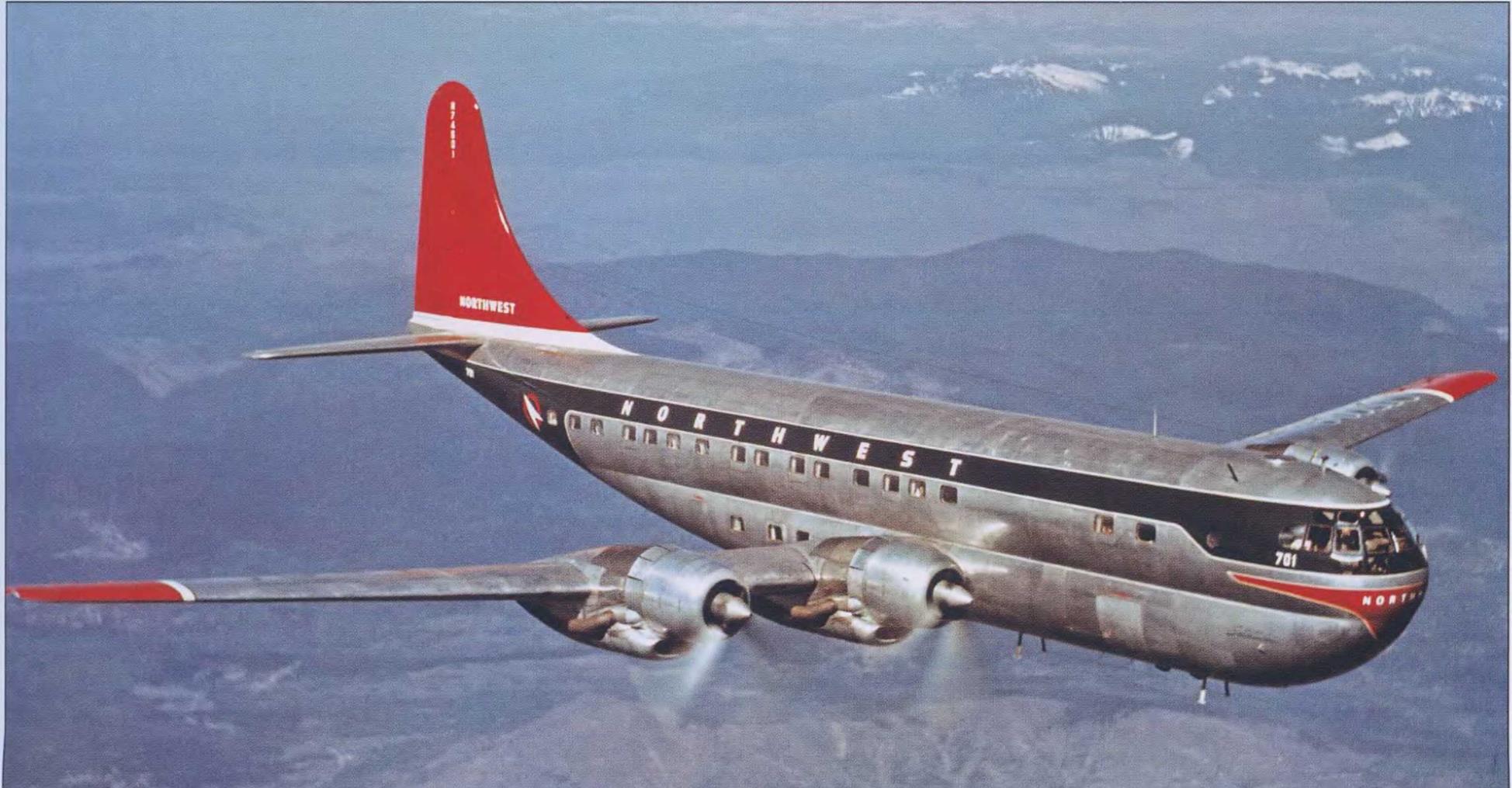Boeing 377 Stratocruiser
Essentially a prewar design, Boeing’s Model 377 was hatched from its military Model 367, designated the C-97 for cargo work, and KC-97 as an aerial tanker. It utilized the B-29 Superfortress wing and engines and answered Pan American Airways’ performance requirement first circulated among aircraft builders in 1941. The carrier was looking to replace its flying boats with a landplane capable of carrying a 17,500-pound payload for 5,000 miles at 375 mph.
The result was one of the most luxurious airliners of the postwar era, with a cruising speed of 340 mph, a maximum payload of 25,000 pounds, an absolute range of 4,600 miles, with a ceiling altitude of more than 33,000 feet. Its Pratt & Whitney 28-cylinder, R-4360 Wasp Major engines were the most powerful ever built for commercial use but would ultimately prove to be troublesome, as were its propellers. Pan Am placed a $25 million launch order in December 1945 for 20 airplanes.
The “Strat” first flew on July 8, 1947, and entered airline service with Pan Am on April 1, 1949, between


The mighty Model 377 Stratocruiser, Boeing’s first commercial airliner effort since the Model 307 Stratoliner, was brought about by mating the military B-50 Superfortress wings, engines, and tail planes to a twin-lobe fuselage. Though loved by passengers for its luxurious interior cabin, the Stratocruiser proved to be complicated to maintain and expensive to operate. In the end, only 56 civil versions were built. (Boeing/Jon Proctor Collection)










